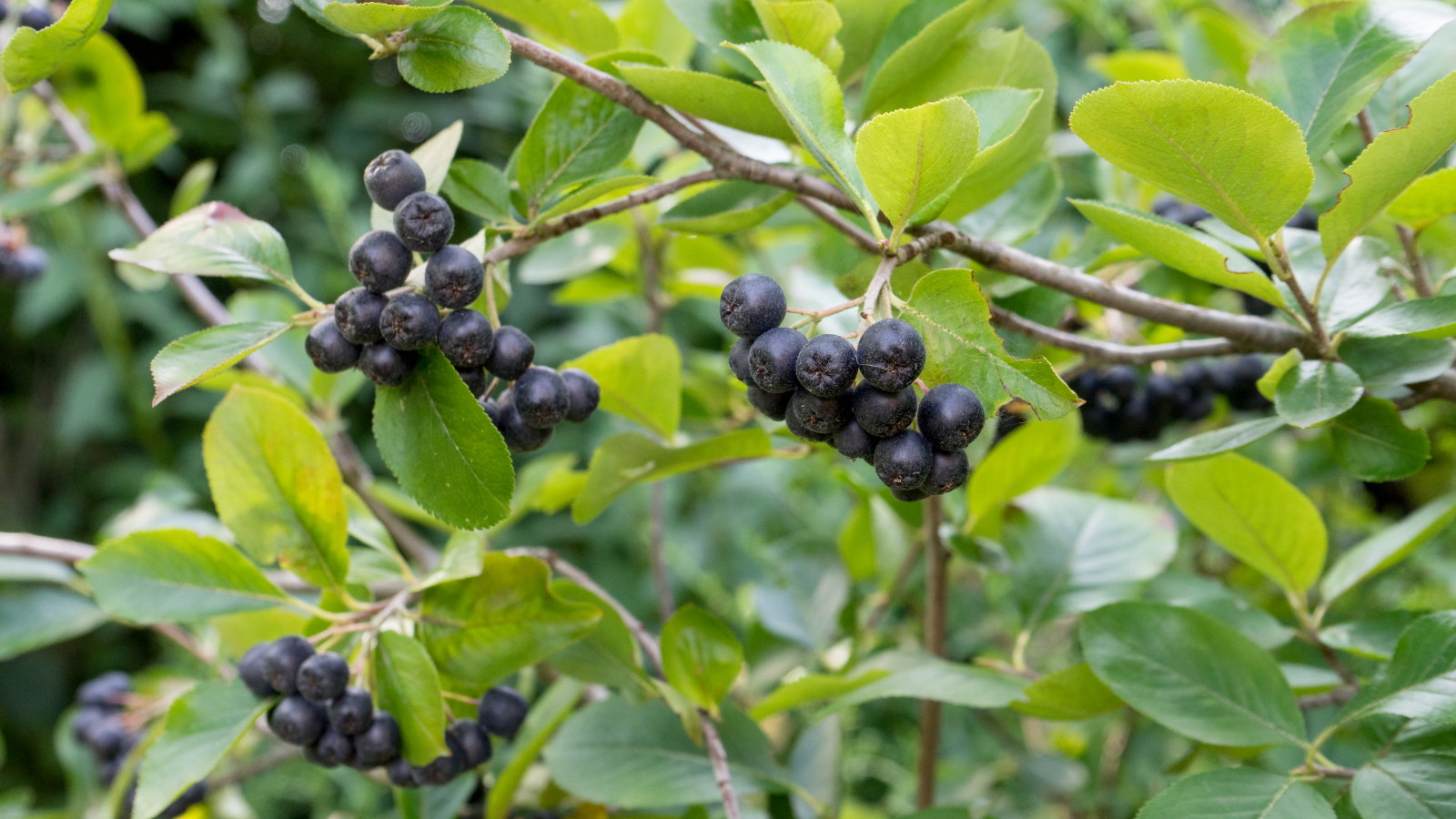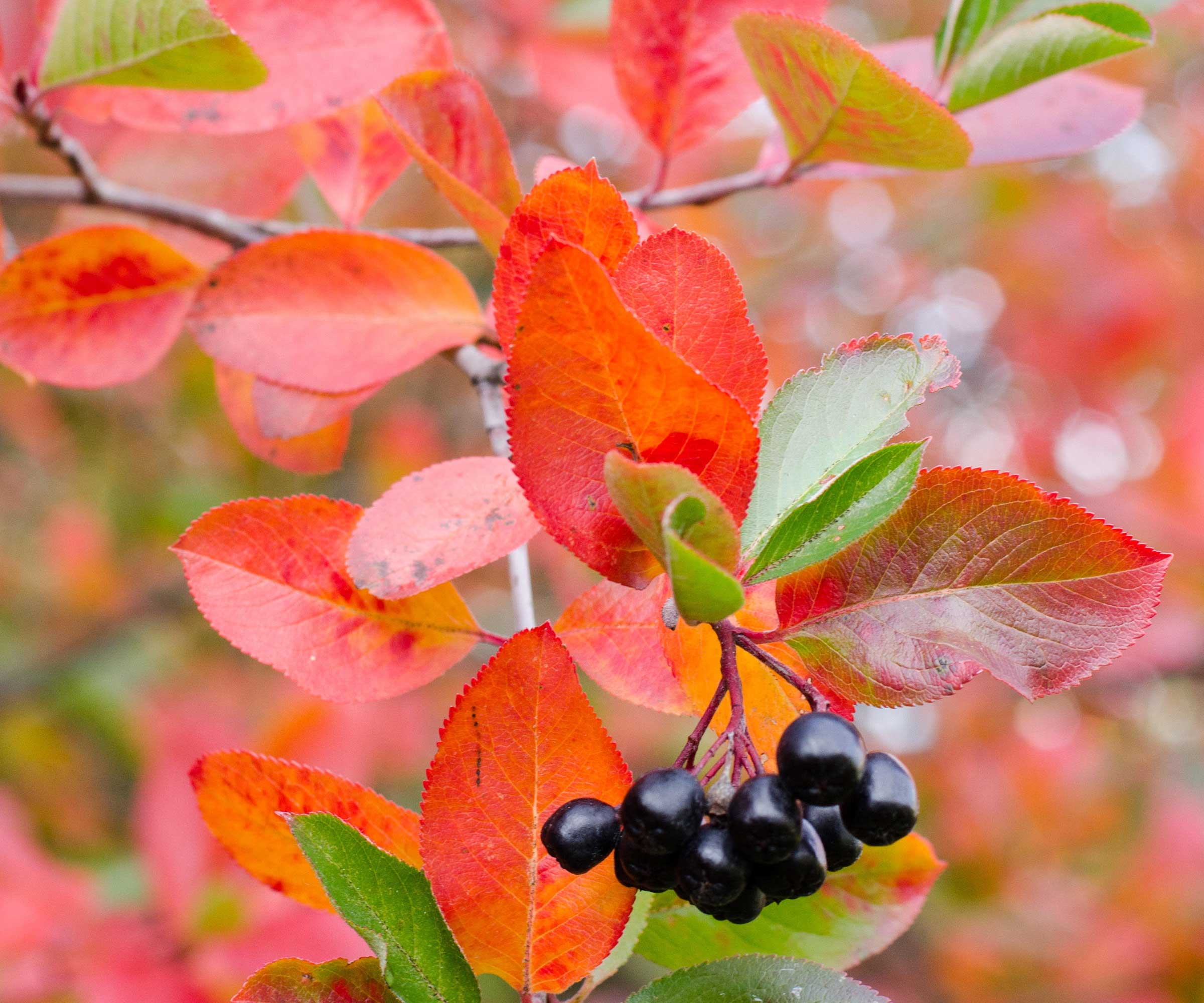How to grow aronia berries – for an underrated and easy-to-grow bush with super-healthy summer fruits
Discover all about chokeberries, from planting to harvesting


Aronia berries, or chokeberries, offer fantastic health benefits. They are rich in antioxidants, polyphenols, and vitamins, and studies have suggested that they can help improve heart health, reduce inflammation, and possess anti-cancer properties.
Not only are the berries a superfood, but they grow on a native low-maintenance shrub that is ideal for backyards. Aronia berry plants make great ornamental additions to any space, offering interest season after season, plus you get a harvest of versatile, healthy summer berries.
If you want to add a new superfood to your backyard kitchen garden, aronia berries are worth considering. Let's explore how to grow aronia berries, including their characteristics, ideal planting locations, and the necessary maintenance for thriving bushes and bountiful harvests.

What are aronia berries?
Aronia berries (Aronia melanocarpa) are a native plant to eastern North America. They are also known as chokeberries, though they shouldn’t be confused with chokecherry (Prunus virginiana), which is a different plant altogether.
They are cold-hardy fruit bushes for US hardiness zone 3 that offer year-round interest. Aronia berries have creamy white flowers in spring, foliage that turns from green to red in fall, and their ink-black berries are a rich source of antioxidants and vitamin C.
Aronia berries can be eaten fresh from the shrub, though their astringent taste is not to everyone’s liking. Katie Brines, from Stark Bro’s Nurseries and Orchards, recommends: ‘Aronia berries have a strong, tart flavor that is best enjoyed in cooked dishes, jams, jellies, and juices.’
You can get live black chokeberry bushes at Nature Hills.
Design expertise in your inbox – from inspiring decorating ideas and beautiful celebrity homes to practical gardening advice and shopping round-ups.

Katie Brines is a gardener and grower, as well as being part of the small marketing team at Stark Bro's. The nursery has provided quality fruit trees, nut trees, berry plants, and garden plants across America for over 200 years.
Where to grow aronia berries

An ideal spot to grow aronia berries is similar to that where you should plant blueberries for maximum fruiting. As Katie Brines explains: ‘They thrive in slightly acidic, well-drained soil and can grow alongside blueberries, benefiting from similar care and growing conditions.’
The key factors to consider include planting aronia berries in full sun or partial shade. Giving plants six to eight hours of sunlight a day will reward you with the best yield; however, bushes may benefit from some protection in the afternoon in hotter climates.
Aronia berries are tolerant of many soil types, but they will thrive best in fertile and well-draining soils. Adding organic matter, such as compost or well-rotted manure, will boost the drainage of heavier soils and provide nutrients to the bushes.
Bushes are available from specialist nurseries or online and are best planted in the spring or fall. If you want the best crop of fruits, more than one plant is often required.
Katie Brines says: ‘Even though aronia berry plants are self-pollinating, we still recommend planting another variety in your yard for optimum fruit production.’
When planting aronia berries, give each bush at least five to eight feet of space to give them enough space to mature, allow air and light circulation to keep them healthy, and room to harvest the fruits.
Tips to grow aronia berries successfully

Aronia berries need regular watering for the first year after planting to get established in their planting location.
And for the following years, aronia berries will benefit from regular deep watering, especially during dry periods and when the bush is flowering and fruiting. A lack of water will impact the yield of fruits.
Plants prefer moist soil but not overwatering, as root rot is a real risk if shrubs sit in consistently soggy soil. Use a soil moisture meter to make wise choices about when to water plants and prevent any watering mistakes.
Mulching around plants annually is a recommended way to retain moisture in the soil, suppress weeds that compete for water and nutrients, and provide nutrients as the material breaks down (if you mulch with organic matter, like this premium organic compost at Walmart).
When you grow aronia berries, they will benefit from annual feeding to keep the soil fertile. The best way is to either add compost or well-rotted manure to the soil annually, in spring or fall, or fertilize plants with an organic, slow-release, balanced fertilizer in the spring. Always apply any products at the recommended rate, as overfertilizing plants causes more harm than good.
Aronia berries fruit on older wood and reach peak productivity on three-year-old wood. Regular pruning keeps bushes at a manageable size and ensures they are highly productive and full of a good mix of ages of wood. Prune aronia berries in late winter or early spring, removing some of the oldest branches along with any weak or thin stems and any dead, damaged, or diseased ones.
Aronia berries are ready to harvest from late summer into fall, with the first fruits often ripening in the middle of August. Netting the tree is advisable to prevent birds from eating the ripe fruits from the bush.
A fully ripe aronia berry should be ink-black and soft. Wait until the fruits turn a deep black with no reddish tint to harvest. Take care when harvesting, either by hand or with a berry picker, and consider wearing gloves as the fruits can stain if they split.
FAQs
Are aronia berries poisonous?
No, aronia berries are safe to eat. The fruits are not toxic to humans or animals. However, the tart berries may cause mild stomach upset if they are in large quantities.
If you live in a colder climate and want to grow nutritious fruit, then honeyberries are worth considering. You can grow honeyberry plants as low as US hardiness zone 2, and bushes will provide early harvests of fruits in late spring. These fruits look like elongated blueberries, taste like a mix of blueberries and raspberries, and are high in vitamins and antioxidants.

Drew has worked as a writer since 2008 and was also a professional gardener for many years. As a trained horticulturist, he worked in prestigious historic gardens, including Hanbury Hall and the world-famous Hidcote Manor Garden. He also spent time as a specialist kitchen gardener at Soho Farmhouse and Netherby Hall, where he grew vegetables, fruit, herbs, and cut flowers for restaurants. Drew has written for numerous print and online publications and is an allotment holder and garden blogger. He is shortlisted for the Digital Gardening Writer of the Year at the 2025 Garden Media Guild Awards.
You must confirm your public display name before commenting
Please logout and then login again, you will then be prompted to enter your display name.


